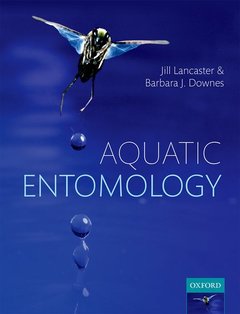Description
Aquatic Entomology
Authors: Lancaster Jill, Downes Barbara J.
Language: English
Subjects for Aquatic Entomology:
Approximative price 89.22 €
In Print (Delivery period: 21 days).
Add to cart296 p. · 19x24.6 cm · Paperback
Description
/li>Contents
/li>Biography
/li>
Part 1 - Introduction to Aquatic Insects.
1: Insect body structure and the aquatic insect orders
2: Evolution, biogeography, and aquatic insect distributions
Part 2 - Environmental constraints on distribution.
3: Gas exchange
4: Physico-chemical gradients and extremes
5: The biomechanics of living in and on water
Part 3 - Sensory systems, movement, and dispersal.
6: Sensory systems - photoreception
7: Sensory systems - mechano- and chemoreception
8: Locomotion in and on water
9: Dispersal in the terrestrial environment
Part 4 - Population dynamics and population persistence.
10: Reproduction and mating behaviour
11: Oviposition and eggs
12: Development
Part 5 - Trophic relationships.
13: Feeding devices and foraging strategies
14: Diet, digestion, and defecation
References
These books may interest you

Lipids in Freshwater Ecosystems 158.24 €



